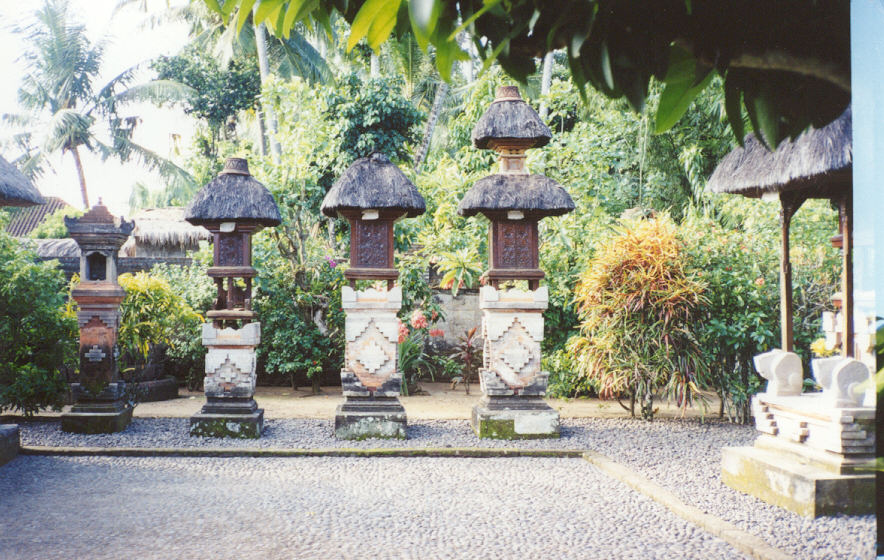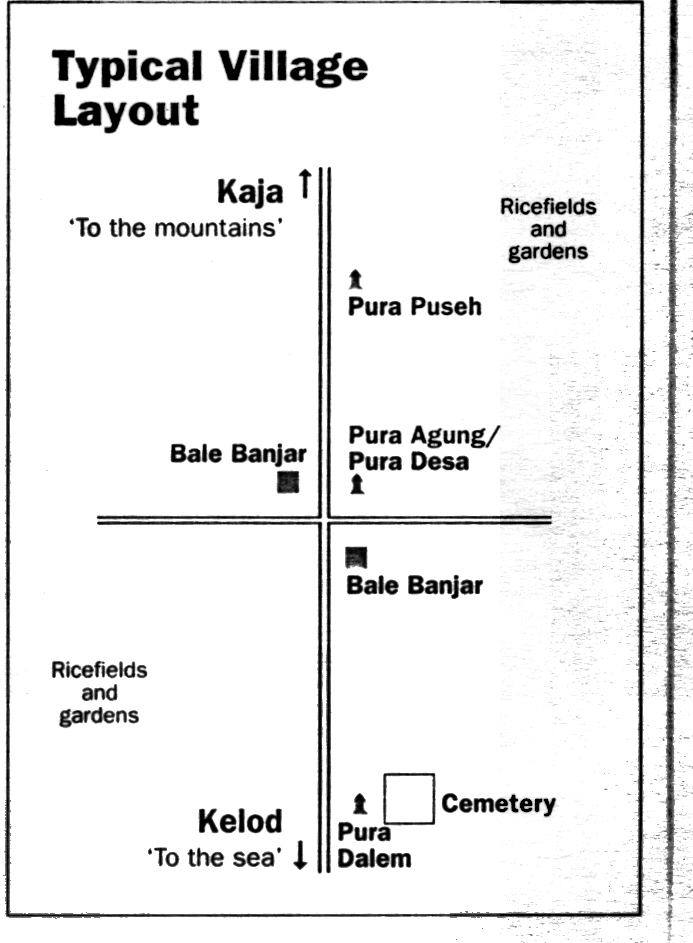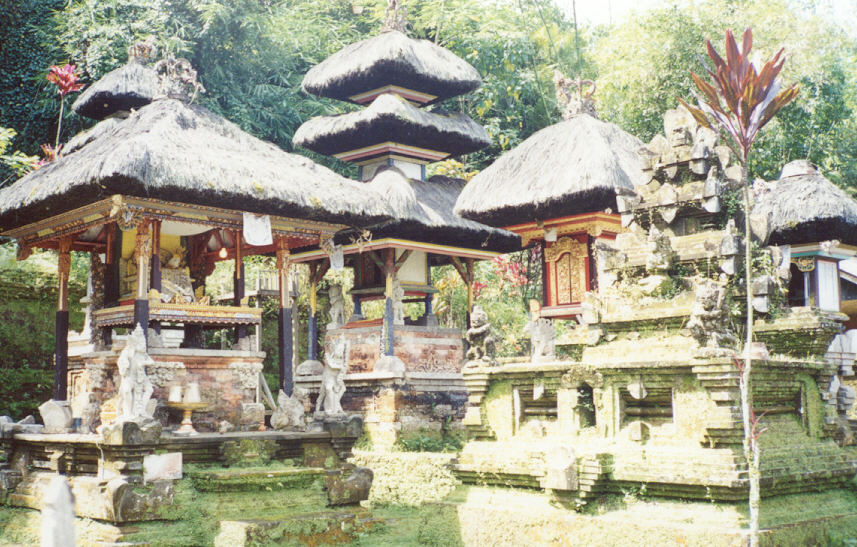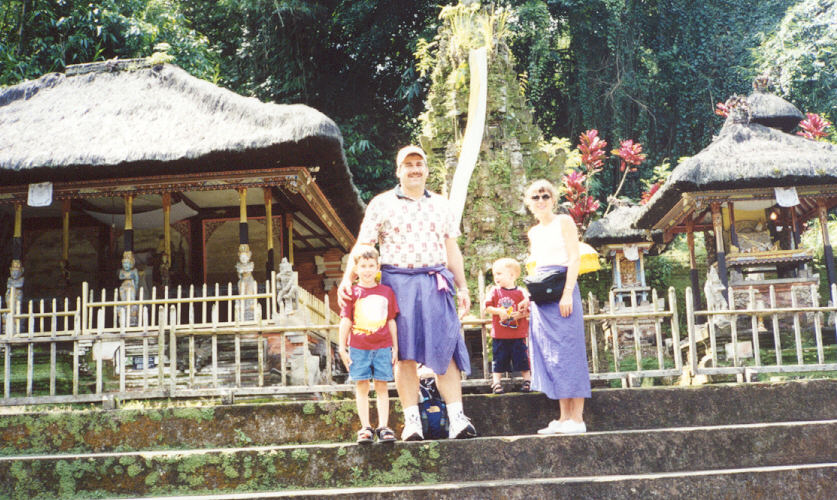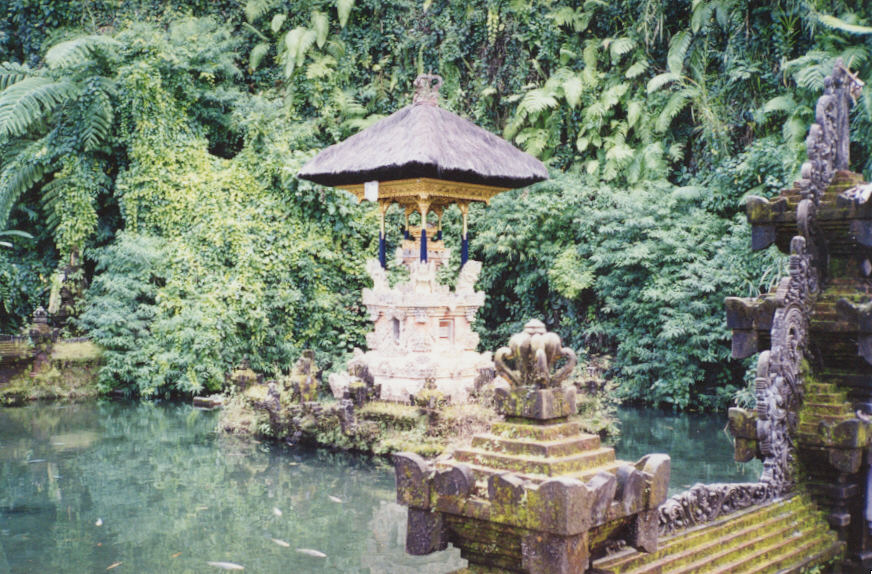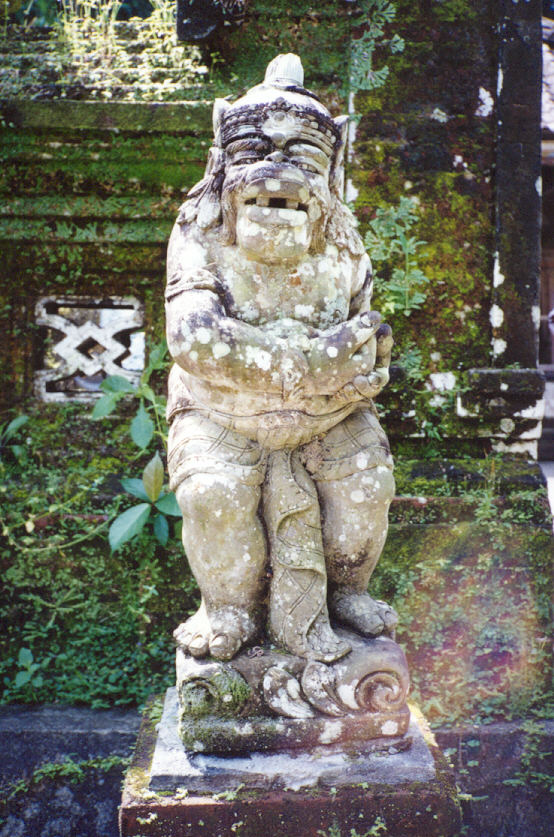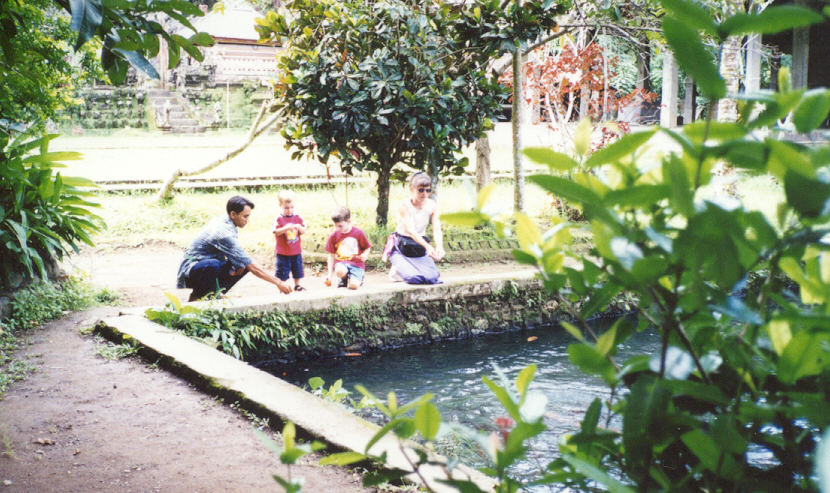Bali is a Hindu island. Due to some strokes of good luck throughout history and its location, Bali was spared from the onslaught on Islam. Instead, most of the ancient beliefs, superstitions, and worship practices remain even today.
Spatial orientation is very important on Bali. It is also the key to understanding their view of and approach to the gods. The most important references are "kaja" (upstream or toward the mountain) and "kelod" (downstream or toward the sea). Please note that in southern Bali "kaja" lies north while in northern Bali it lies south. The opposite is true for "kelod".
There are literally thousands of temples on Bali. These can be divided into two distinct groupings - private ("sanggah") and public ("pura") temples. The private temples are in each family compound. A family must retrieve holy water every six months from the main temple for each god's shrine they have in their compound temple.
